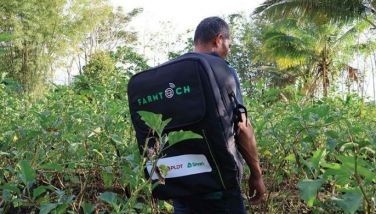Philippines sets sights on CPTPP

Can CPTPP, Canada clamp cracks in clothing commerce?
(Second of three parts)
MANILA, Philippines — Robert Young knows that a trade deal covering 11 countries and spanning three continents may be the missing piece to solve the recovery puzzle of the garments industry.
The Comprehensive and Progressive Agreement for a Trans-Pacific Partnership (CPTPP), after all, offers the Philippines a chance to penetrate the markets of Canada, Chile, Mexico and Peru—economies that the country has no existing trade deals with yet.
Young, president of the Foreign Buyers Association of the Philippines (FOBAP), said Canada in particular hosts department store chains, including Hudson’s Bay, that purchase billions worth of clothing products from Asian suppliers.
At the height of the pandemic last year, Canada imported $8.66 billion of garments, proof of how expansive its demand can be even in challenging periods. It acquired more than half of its apparel imports from Asia’s manufacturing giants China, $3.25 billion; Bangladesh, $1.09 billion; Vietnam, $961.69 million; and Cambodia, $873.34 million.
However, Young wants the Department of Trade and Industry (DTI) to think twice before signing up the Philippines in the CPTPP. He said the CPTPP may open up opportunities for the industry, but it will eventually lose out to competitors, especially Vietnam.
And losing out to regional peers in the face of recession could drive investors away and, in turn, leave workers jobless, Young warned.
Garment exports by the Philippines slipped by an average of 12.6 percent in the past five years, to $642.67 million in 2020, from $1.09 billion in 2016, as the country failed to keep pace with the development of its Southeast Asian counterparts.
In an interview with the STAR, Young said the absence of a textile industry to support garments production would prevent the Philippines from regaining its status as a leading clothing exporter by next year as set by the DTI in a road map.
“The Philippine garments industry has no backup resources. Backup industries are almost zero. The raw materials we use, including the textile and buttons, are all imported. We buy our fabric from South Korea, China, Vietnam,” Young said.
As fabric needs to be sourced from abroad, making jeans in the Philippines could cost as much as $10 per pair compared to just $8 in Vietnam. Further, industry sources said it really takes 20 percent more to produce clothing items here than in Vietnam.
At a price point then, Vietnam—who is also a founding member of the CPTPP like Canada—will beat the Philippines in any contest for apparel orders, Young said.
The FOBAP chief said the DTI would subject the Philippines to direct competition if it insists on acceding the country to the CPTPP, and this may force investors to shut down their plants here and relocate to a neighboring economy.
Industry players said they understand the DTI’s intent in exploring the CPTPP markets as export destinations for Philippine garments.
Canada slaps an 18 percent tariff on clothing products that come from outside free trade areas. If the Philippines joins the CPTPP, that duty will be eliminated for good.
However, local manufacturers have yet to move beyond their expertise of producing fast fashion lines like jeans, shirts and shorts. They lack the capital, raw materials and skills to make what is demanded by Canadian buyers: winter clothes, such as padded ski jackets.
In a proof of this incapacity, garment exports to Canada declined by a five year average of 12.2 percent to $14.81 million in 2020, from $24.94 million in 2016, based on data from the Philippine Statistics Authority.
“We need to purchase our fabric from abroad to manufacture garments for Canada. It will take a month or two for us to deliver them. Compared to the Vietnamese, they can get the fabric from their local mills, finish the orders this week and deliver them next week,” Young said.
For now, Young said the Philippines should work on recovering its $1 billion garment exports by improving shipments to traditional markets United States, Japan and South Korea.
Rene Ofreneo, labor and industrial relations professor at the University of the Philippines, asked the government to develop the garments industry by funding efforts to upgrade its products. This way, local players can capture orders for high value apparel similar to what large scale buyers in Canada import.
“There should be a continuing search for a niche. How can we compete with Vietnam when the manufacturers there are now making high end garments? They can now produce heavy jackets. We don’t have the capacity to do that,” Ofreneo told The STAR.
Ofreneo said the country found a niche during the pandemic when garment players repurposed their factories to make personal protective equipment (PPEs) for domestic supply.
However, Ofreneo said the government blew its chances of turning the PPE trade into an export industry when it opted to source its PPE needs from abroad.
PPE makers invested a total of $35 million or nearly P1.7 billion to transform their facilities and save the jobs of about 7,500 workers, but only received 14 percent or less than P700 million, of the P4.8 billion contracts placed by the government.
For Ofreneo, it’s a question worth asking. How can the government support garment makers on the export end when it can’t even support them on the domestic front?
(To be concluded)
- Latest
- Trending




























